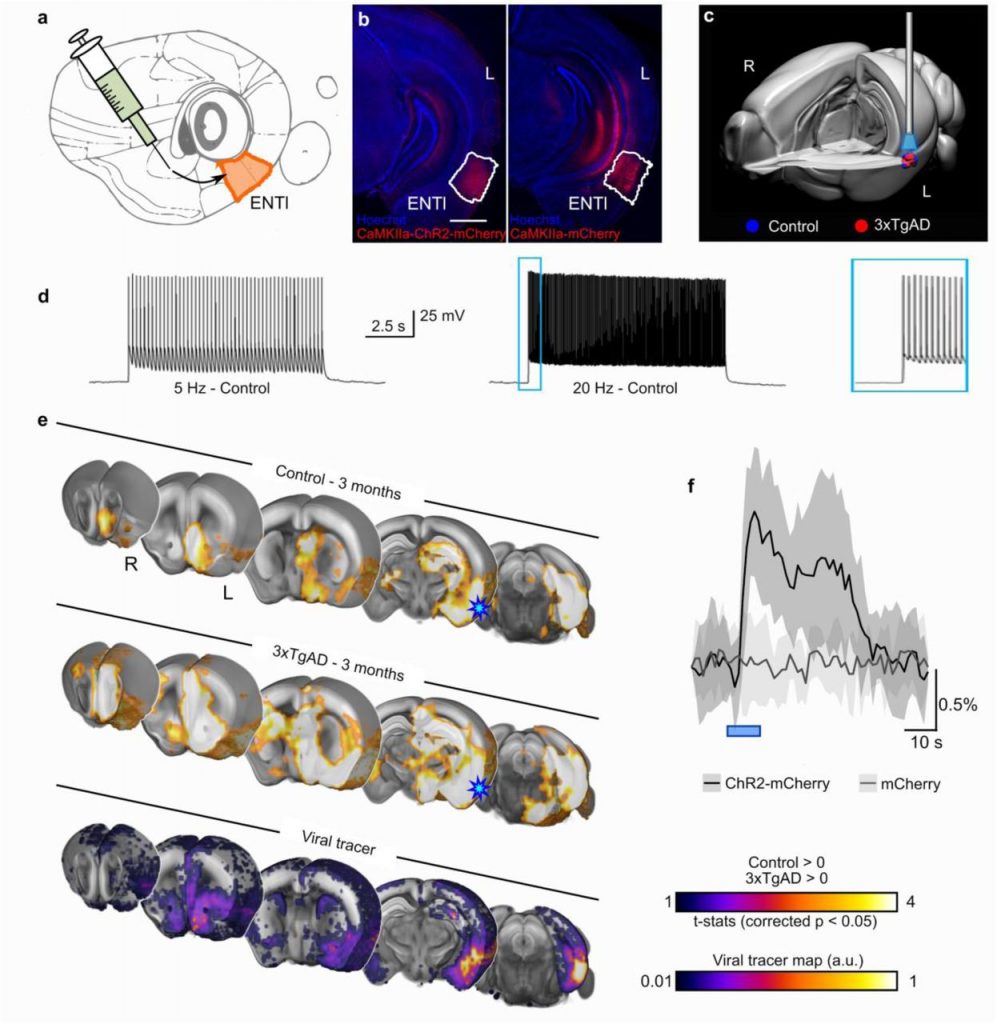
Local and global dichotomic dysfunction in resting and evoked functional connectivity precedes tauopathy
Mandino, F., Yeow, L. Y., Bi, R., Sejin, L., Bae, H. G., Baek, S. H., … Grandjean, J. (In press). Local and global dichotomic dysfunction in resting and evoked functional connectivity precedes tauopathy. doi:10.1101/2020.04.03.022590
Functional activity alterations are one of the earliest hallmarks of Alzheimer’s disease (AD), already detected prior to beta-amyloid plaque and tau-tangle accumulation. To reveal the physiological basis underpinning these changes at the onset of the pathology, we leveraged fMRI in the 3xTgAD mouse model for AD. Resting-state fMRI revealed functional connectivity loss within areas homologous to the human temporal lobe, particularly the entorhinal cortex. Optogenetic activation of the entorhinal cortex results, instead, in enhanced fMRI signal, thus denoting an increase in metabolic demand under load. This is corroborated by synaptic hyperexcitability in the highlighted projection targets, reported with electrophysiological recordings. Thus, 3xTgAD mice reveal a dichotomic behavior between resting and evoked states, resulting in a functional brain-wide reorganization with local underpinnings, which reconciles evidence from the human literature. The 3xTgAD tauopathy profile resembles that in AD patients closely, suggesting that similar pathophysiological mechanisms might underlie network dysfunction in clinical cases.
Read the full article here.






0 Comments